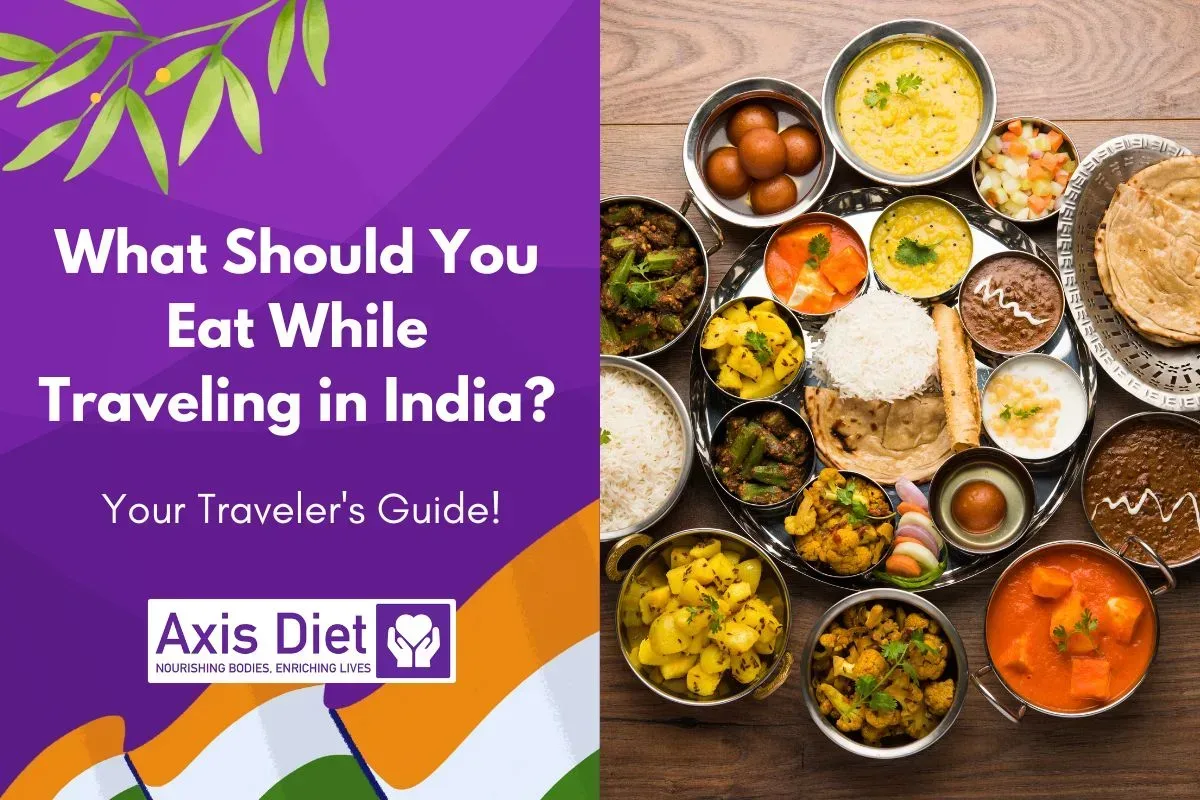At AxisDiet, we passionately empower our readers with credible, research-backed nutritional insights. India’s culinary tapestry, with its vast array of flavors and ingredients, offers an exciting yet sometimes challenging terrain for those conscious about their health. Here, we dive deep into five actionable strategies to ensure that you can relish the Indian gastronomy experience while keeping health at the forefront.
Opt for Grilled, Baked, or Steamed
The essence of Indian delicacies often lies in their preparation methods. Tourists and travelers seeking street food can enhance their food experience and health by opting for stalls that offer grilled or steamed dishes like momos, tikkas, or idlis. When dining in restaurants, a quick chat with the staff about the cooking method can provide clarity, ensuring you make a healthier choice. For the office-going crowd, it’s easy to fall into the routine of fried foods or rich curries. However, with a little attention, one can opt for grilled or steamed dishes. Even when ordering in, filtering your online menu choices for baked or grilled items can make a significant difference.
Traditional methods such as grilling in tandoors or steaming to make idlis offer:
– Lower Fat Content: These methods use less oil compared to frying, reducing the dish’s overall calorie count.
– Preservation of Nutrients: Steaming, especially, retains a higher percentage of nutrients in vegetables and meats.
– Digestibility: Grilled and steamed foods are often easier to digest.
Next time you’re at a restaurant, favor dishes like ‘Tandoori Chicken’, ‘Grilled Paneer’, or ‘Steamed Momos’ for a delightful yet healthier culinary experience.
Mind the Masalas
India is globally renowned for its aromatic spices, which aren’t just flavor enhancers but are also packed with health benefits. Tourists and travelers can venture into drier preparations or dishes labeled “bhuna,” which typically have lesser oil. For those genuinely intrigued by Indian spices, participating in a local cooking class can be both educational and fun, teaching you how spices can shine without an excessive amount of oil. On the other hand, office-goers packing lunch can control their dish’s oiliness while still letting the spices play their aromatic roles. When ordering from outside, a simple request to reduce oil or ghee can ensure a healthier meal without compromising on flavor.
Indian cuisine is celebrated for its aromatic spices. Spices such as turmeric, fenugreek, and cinnamon are not just flavor enhancers but also medicinal powerhouses. However, moderation is crucial:
– Health Benefits: Regular but moderate consumption of spices can offer anti-inflammatory effects, improve digestion, and boost metabolism.
– Caloric Caution: While spices themselves are low in calories, the ghee or oil they’re often cooked in can add up.
It’s a balance of savoring the rich flavors while being aware of the preparations.
Hydration is Key
India, especially during its summer months, can challenge even the most seasoned travelers with its sweltering heat. Carrying bottled water becomes essential. Additionally, one can embrace local hydrating drinks like coconut water in the coastal regions or sugarcane juice in the plains. Office workers, often lost in their busy schedules, might neglect hydration. Keeping a refillable water bottle and setting timely reminders can be a practical solution. Swapping out regular caffeinated drinks with herbal infusions or green tea can also aid hydration while providing additional health benefits.
India, especially during its summer, can be sweltering. Staying hydrated is crucial:
– Bottled Water: Always choose sealed bottled water to avoid water-borne diseases.
– Natural Drinks: Coconut water, sugarcane juice, and lime water are refreshing and packed with electrolytes and vitamins.
– Caffeine Moderation: Limit your intake of tea and coffee, and if possible, reduce the sugar in them.
Beware of Street Food
Street food in India is a sensory and flavorful experience, a must-try for any visitor. However, the key is to choose wisely. Bustling stalls with higher footfalls typically indicate fresher produce due to faster turnover. Trusting one’s senses is crucial; if something looks or smells off, it’s better to pass. For locals and office-goers craving the taste of the streets, opting for known chains that serve street food in more hygienic conditions can be a safer choice. But when the craving for authentic street food strikes, ensuring it’s prepared fresh in front of you can significantly reduce any health risks.
Street food is an integral part of India’s culinary identity. Yet, it’s essential to be cautious:
– Cleanliness: Choose vendors who maintain hygiene standards.
– Freshness: Opt for dishes cooked on the spot rather than pre-prepared ones.
– Local Recommendations: Often, locals know the best and most reputable street food joints. Don’t hesitate to ask!
Embrace Local Produce
For both tourists and travelers exploring India, diving deep into regional cuisines can enhance the journey. One way to do this is to familiarize oneself with seasonal fruits and vegetables of the area you’re visiting. Asking locals, conducting quick online research, or visiting local markets can be a delightful way to discover fresh produce and regional specialties. For office-goers, considering the local and seasonal produce isn’t just a choice for health but also a palate adventure. It might be beneficial to check with your lunch providers or office canteens for options that highlight local ingredients. Keeping a stash of seasonal fruits at your desk can be a delightful and healthy snacking alternative.
India’s agro-diversity presents an array of seasonal fruits and vegetables, each with unique nutritional benefits. Consuming local, seasonal produce ensures:
– Higher Nutritional Value: Freshly harvested produce retains more vitamins and minerals.
– Taste: Local produce often tastes better as it is grown in its natural environment and hasn’t been stored for long durations.
– Sustainable Choice: Opting for local helps reduce the carbon footprint associated with transporting food items over long distances.
When dining out, consider dishes that hero local ingredients, and relish the natural flavors and health benefits they bring.
North India
The North, with its diverse climates and cultures, offers a mix of robust flavors and rich textures.
East India
The Eastern part of India is known for its fish and rice delicacies due to its vast coastline and river deltas.
West India
This part of India brings a blend of coastal flavors, desert recipes, and metropolitan mixes.
South India
The South is celebrated for its aromatic spices and a rich variety of vegetarian and non-vegetarian dishes.
Central and North-East India
These regions, though less explored, offer a treasure trove of flavors.
Dining out and traveling in India is a sensory adventure. By integrating these five strategies, you can ensure that this adventure is not just flavorful, but also aligned with health-conscious choices.
Join us at Axis Diet as we journey through the vast landscape of nutrition, demystifying complexities and turning them into actionable insights for a healthier you.






[…] Indian government has initiated several programs to promote healthy eating habits, including educating people about nutrition’s importance, providing subsidies on nutritious […]
[…] Indian cuisine is rich in unrefined and wholesome foods. Emphasize traditional recipes that use whole grains, legumes, and fresh vegetables. For example, prefer a homemade roti made from whole wheat over store-bought white bread. […]